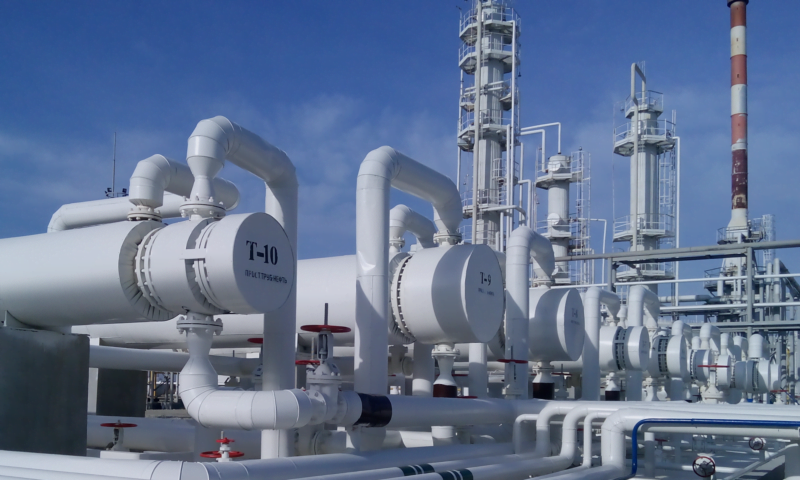Equipment Inspection Checklists are concise documents that outline the essential points to assess and verify during equipment inspection, ensuring compliance, safety, and proper functioning.
Asset-heavy industries such as the oil & gas and chemical industries rely on robust inspection regimes to help manage assets, schedule inspections and maintenance, and provide insights into the efficiency and effectiveness of their facilities.
For these inspections, industrial facilities depend on collecting large amounts of information, which is collected manually by inspectors and contractors in the field. The manual information collection is usually done using some form of Equipment Inspection Checklist.
Why are Equipment Inspection Checklists important?
Equipment Inspection Checklists are an essential source of information for Inspection Data Management Systems (IDMS) implemented to manage facilities and equipment. Well-designed Inspection Checklists provide significant benefits:
- Safety and Compliance: Equipment inspection checklists help ensure that industrial machinery and equipment meet safety standards and comply with regulatory requirements. By using inspection checklists, facilities can systematically evaluate the condition of equipment, identify deficiencies, and take corrective actions to maintain a safe working environment.
- Preventive Maintenance: Regular equipment inspections are crucial for preventive maintenance. By adhering to a checklist, the facility can assess the condition of equipment and detect potential failures or malfunctions before they occur. This proactive approach helps minimize unexpected breakdowns, reduces downtime, and maximizes the lifespan of equipment.
- Operational Efficiency: Equipment inspection checklists contribute to improved operational efficiency. By following a standardized checklist, facility staff can evaluate various aspects of equipment performance, including calibration, lubrication, cleanliness, and functionality.
- Documentation and Accountability: Inspection checklists provide a documented record of equipment evaluations and maintenance activities. This documentation serves as evidence of compliance with safety regulations, maintenance protocols, and quality control standards. When dealing with regulatory agencies, having a well-maintained inspection record can be valuable for demonstrating compliance and due diligence.
- Source of Data for Analytics: Data captured during inspections can be assessed, trended, and reviewed to identify potential bad actors, inefficiencies in your processes and any required changes to inspection or maintenance schedules.
How are Equipment Inspection Checklists currently implemented?
In typical industrial settings, industrial coordinators or planners prepare equipment inspection checklists using paper forms, MS Excel, or other software.
Field inspectors or contractors fill in the checklists, which are then submitted to and stored in disconnected systems, making it difficult to evaluate the real condition of a facility’s equipment.
This traditional approach to equipment inspections results in significant inefficiency and introduces the possibility for errors to creep into your inspection management system as inspection information is transcribed from forms.
IMS Dynamic Forms: A Better Approach to Equipment Inspection Checklists
In an ideal world, inspectors and contractors could record the results of their inspections in the field, and have those results immediately available in the IDMS to review the data and to credit the relevant Schedule.
The ideal IDMS would help assess the collected data to provide valuable insights into potential bad actors, potential failures, and operational efficiency.
IMS Dynamic Forms is Cenosco’s solution to the problems associated with legacy Equipment Inspection Checklists. Dynamic Forms make it easy to configure your own checklists to allow for the ideal inspection workflow.
Amongst other things, Dynamic Forms allow you to employ logic, add constraints, reference lookup tables, add pictures, annotations, and signatures, and display historical data directly in the form. IMS will also track and show the checklist progress.
When an issue is found, you can create corrective schedules (CAIRs) directly from your checklist. Furthermore, IMS can be used offline in the field, allowing for real-time recording of inspection results directly into your personalized digital checklist, creating an ideal scenario where you can seamlessly capture data regardless of your location.
IMS integrates seamlessly with your choice of Computerized Maintenance Management Software (CMMS), e.g., for Schedule work orders and notifications.
Cenosco can help improve your efficiency.
Implementing an efficient and effective inspection and maintenance regime for your facility can enhance safety, reduce downtime, optimize operational performance, and meet regulatory requirements.
Dynamic Forms provide a comprehensive set of tools that allow you to create custom equipment inspection checklists that work best for your facility and your workflow. For more challenging situations, our experienced staff and domain experts are ready to work with you to develop solutions to enhance the reliability, safety, and efficiency of your operation.
If you are interested in learning more about IMS and Dynamic Forms, contact us!
Cenosco is an asset integrity management software company with over 20 years of product leadership in asset-heavy industries.
Their IMS Suite of solutions was designed to support users in making smart inspection and maintenance decisions to increase safety, asset availability, and lowering asset management costs. It is currently utilized to safeguard several hundred assets in over 50 countries. The IMS Suite was created with world-renowned Oil & Gas leader, Shell.
See IMS in Action
Fill out the form to unlock the power of IMS
Image by jcomp on Freepik




